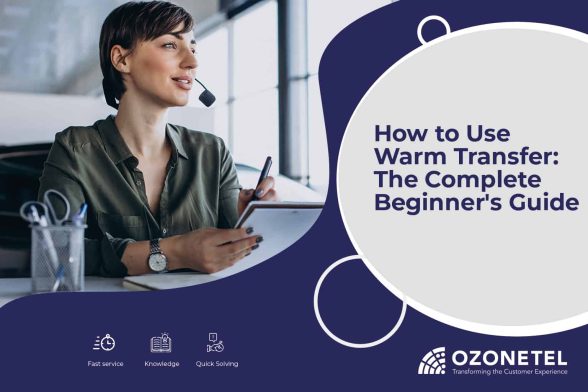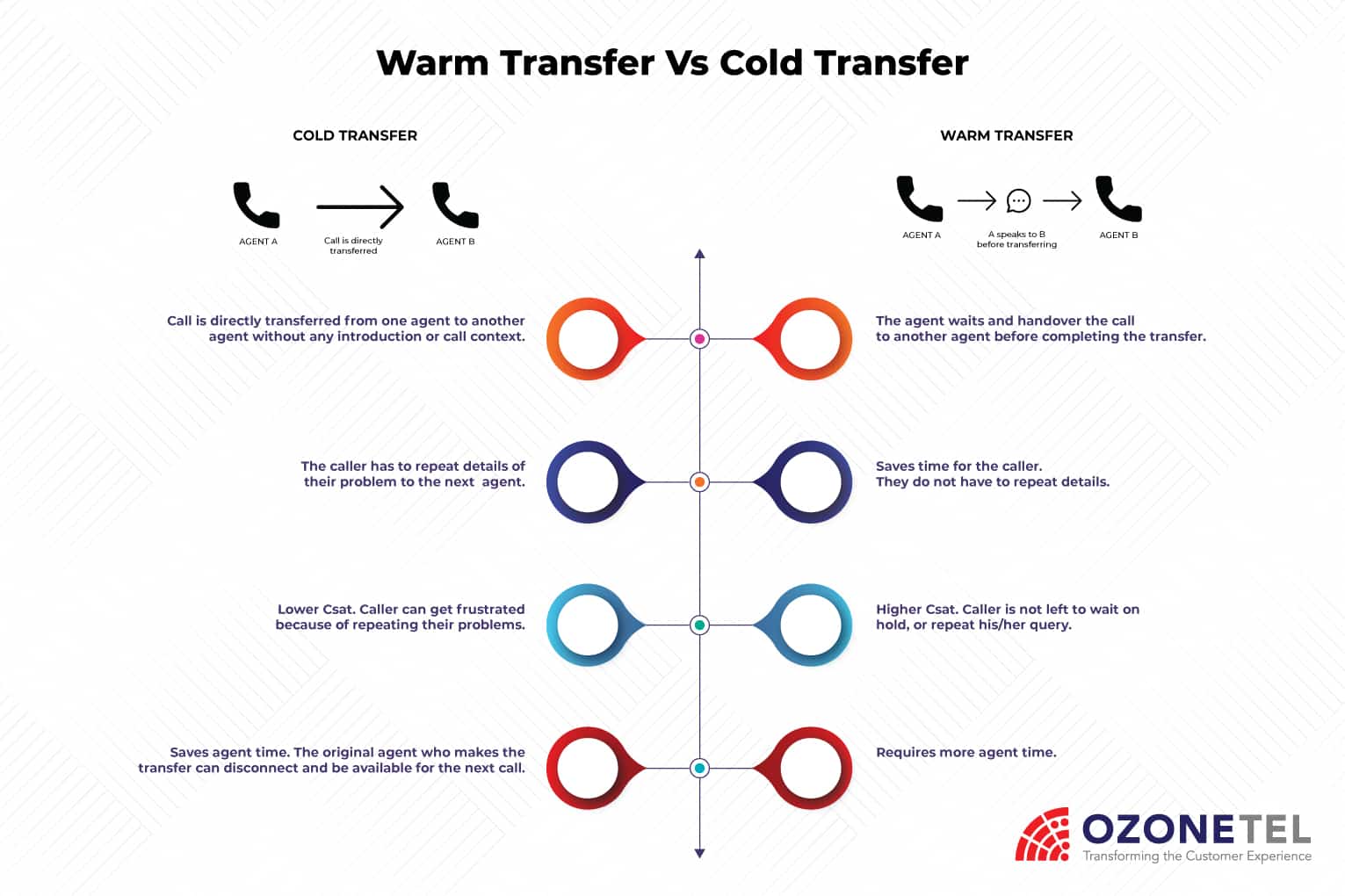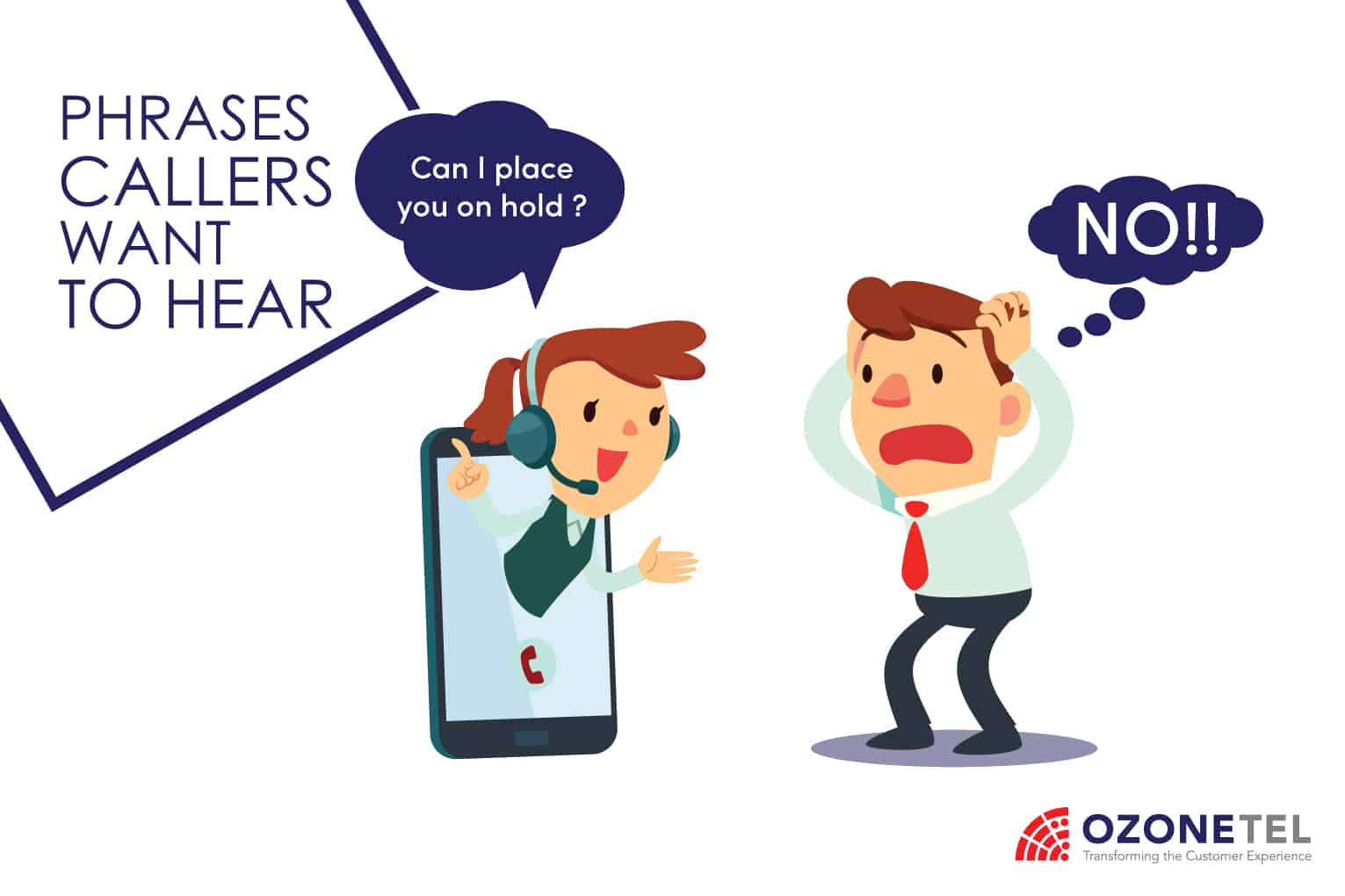- Resources
- How to Use Warm Transfer: The Complete Beginner’s Guide
How to Use Warm Transfer: The Complete Beginner’s Guide

Do you need a more efficient approach to transferring business calls that eliminates the need for your customers to repeat their queries each time?
A warm transfer can be an innovative solution to this problem. A warm transfer is a holding service that allows agents and receptionists to transfer a call without making the customer restate their request when they connect to a new agent.
Result: You will save precious time and money while improving customer service quality.
Don’t waste another minute! Learn how to use a warm transfer to make your call center operations more efficient and save your customers time.
What is a Warm Transfer?
A warm transfer, also known as a consultative hold, is a call transfer where the agent or receptionist patches the connection onto another agent, a supervisor, another department, or an external phone number while keeping the caller on hold. When the call connects to the destination agent or manager, they quickly walk them through the call’s context before completing the transfer.
The original agent who transfers the call can remain part of the conversation (three-party conference) or drop out at any time if they no longer need to speak to either party.
Not all call transfers take place the same way. For example, when call center efficiency is the key, agents often use another form of transferring calls, blind or cold transfers.
Warm Transfer vs. Cold Transfer

In a warm transfer, the receiver knows the call’s context and reason.
By contrast, a cold transfer occurs when an agent transfers a caller to another department or party without explaining the context or reason for the call. As a result, the caller must restate their question or situation, adding frustration and wasting time. A cold transfer is also known as a blind transfer.
Why Choose Warm Transfer vs. Cold Transfer?
During a cold transfer, a customer gets abruptly transferred to another agent or company representative. Sometimes the transfer process happens without the customer knowing why the transfer is happening and often without knowing to whom they will speak. They’re left to wait on hold, which can be highly frustrating.
The effect on employees is the same; employees don’t get the background information for transferred callers, so each contact also comes in the cold.
This lack of insight can lead to customer dissatisfaction as they wonder if the new person will actually help them or send them back into an endless loop of hang-ups and frustration.
On the other hand, in a warm transfer/consultative hold, the customer and agent know that they are transferring and about to speak with someone new. Instead of placing a caller on hold, agents can keep the conversation flowing until the next agent answers.
Although cold transfers may seem like the easiest option, especially for a busy receptionist or call center agent, they can do more harm than good. Cold transfers can frustrate customers and potentially lead to lost business. In contrast, Warm transfers are a great way to ensure that your customers and agents are happy and satisfied with their experience. Therefore, it is crucial to consider warm transfers over cold transfers when dealing with an angry customer.
In short, when you need to prioritize customer experience over efficiency, you should choose warm transferring over cold or blind transfers.
When to Use a Warm Transfer
In general, a receptionist service or a company’s customer service should select warm transfers over blind transfers to improve the customer service experience.
Representatives should choose warm transfers for outbound sales when a new prospect expresses intent and availability. This can close business deals faster. Warm transfers are also an effective way to move customers along in the sales process, preventing them from getting stuck on one step.
Inbound customer service reps can use warm transfers to politely pass customers off to other departments without having to say goodbye or hang up. Warm transfers are a perfect option when an agent does not have the relevant information to solve a customer’s query.
A warm transfer is beneficial when a customer service representative requires information from a department that is not conventionally customer-facing. For instance, if the call requires consulting the accounts department for a billing issue, the agent can place the customer on indefinite, frustrating hold while obtaining the relevant information or use a more satisfying warm transfer. Using a warm transfer, an agent can join a call with someone in the accounts department and stay connected throughout the call to ensure customer satisfaction.

Here Are Some Examples of Using a Warm Transfer Effectively
- When a caller accidentally connects to the wrong department, your agent can initiate a warm transfer to the correct department so that the caller doesn’t have to repeat any information they already gave your agent.
- When an agent cannot solve a problem, a warm transfer to a colleague or a supervisor can provide immediate help.
- Agents can also take advantage of a warm transfer to consult a technical team or someone with further product knowledge anytime during the call. Agents can stay connected throughout the call and conclude the call themselves (using three-party conferencing).
- Outbound call centers can use warm transfers to qualify leads before passing them on to senior account representatives to close deals faster.
- Customer care executives can promote offers and transfer interested customers to sales representatives. A warm transfer will be perceived as more polite and considerate than a blind transfer and may help clinch the sale.
The Advantages of Using Warm Transfers
There are many advantages to providing warm transfers instead of cold transfers. However, we all know that fast and efficient customer service is of the utmost importance in the call center industry. Is efficiency still possible when using warm transfers?
Warm transfers can help you ensure that business inquiries are smooth and quick. Here are some leading reasons to choose consultative holds instead of cold transfers:
Fast service: Blind transfers are not conducive to quick service. In contrast, warm transfers reduce hold times and customer frustration, resulting in speedier call resolution.
Avoid repetition: Customers don’t have to repeat their issue every time the call transfers; this reduces customer frustration and may reduce average handling time.
Advanced Knowledge: Agents receive context before handling calls, preparing them to resolve problems or close deals as quickly as possible.
Quick problem resolution: Warm transfers increase first-call solutions and improve overall call handling times due to a more positive experience for both customer and agent.
How to Make Warm Transfers
A warm transfer is a feature found on the agent dashboard of cloud contact center software or business phone system.
The transfer process is easy within Ozonetel’s virtual cloud telephony solutions. These simple steps show you how to transfer a call to another department, an external number, or another agent or supervisor within your department.
Step 1: Click on the “Transfer” button on the “Calls Control” bar at the bottom of your agent dashboard. A transfer can take place anytime during an ongoing call.
Step 2: Next, choose where to transfer the call using the drop-down menu in the window popup. Virtual selection options appear as a skill, phone number, or agent. Let’s look at each below.
Transfer to another department: Choose “Skill” from the drop-down menu to transfer calls to another department. Each skill represents a department or set of call center agents—an opportunity to define each skill occurs during contact center software setup.
Transfer to another agent: If you want to transfer the call to a specific team member, select “Agent” and choose the call center agent’s name from the drop-down menu.
Transfer to another phone number: Select “Phone” to connect your customer/prospect to an external number, for example, to transfer a call to a supplier or third-party vendor.
Step 3: After you have made your selection, select “Consultative Hold” in the drop-down menu for “Type” and click on the transfer button.
When the call connects, you can quickly brief the agent/supervisor/third-party vendor about the context of the contact. During this process, the customer is on hold by default.
Step 4: To patch the customer into the call, click the hold button on your call control bar at the bottom of your agent dashboard.
Step 5: You can drop out of the call anytime by clicking the phone icon below your “Call Control” bar at the bottom of your agent dashboard.
Final Thoughts
Warm transfer provide higher customer satisfaction and circumvent the cold contact experience. Conversations improve significantly when callers and agents know what’s happening and can ask questions before continuing a call.
This guide’s simple steps can help provide a positive customer experience while increasing customer satisfaction, loyalty, and retention. You may even notice a decrease in customer service calls altogether.
Ready to get started with our virtual software? Sign up for a free trial today!







